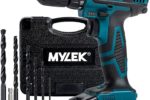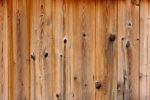The Different Types of Saws and Their Uses

Yeah so let’s cut to the chase, let’s talk about the different types of saws and their uses. Now don’t be alarmed but there are quite a few types of saws you might have heard of. The first one is the classic band saw. It’s got a blade with a continuous loop which allows it to pass through in whatever direction it desires and since it has such great control you can make most any cut on it.
Next up is the circular saw. This one is like its name implies it’s in the shape of a circle and it is used to make straight cuts and easily cuts through just about any material. It’s helpful when you are cutting pieces in large quantities or larger pieces of material.
Then there’s the chain saw. Now this saw might look intimidating when you first see it, but with the right training it can help get through those hard to reach places. It’s best used to help make logs easier to work with and is useful for pruning and trimming trees, but be careful if you don’t want to get cut.
Let’s also not forget about the miter saw. This saw has a blade that tilts at an angle of usually 45 degrees and this allows it to make crosscuts that are much easier than making them with a hand saw. It’s a great tool to have around and will last you a while because it’s much more precise than other saws.
Keeping on going, now the scroll saw is one you might have heard of because it really looks and sounds like a sewing machine but in fact it is a saw. This saw is great for detailed projects such as cutting intricate shapes, curves, and even fretwork.
The reciprocating saw also makes an appearance and it has a great ability to cut through almost any material. It’s a powerful saw which is great for demolition projects and cutting through large pieces of wood.
If you want to make straight cuts then the table saw is what you want to look for. This saw comes with a table to back up the material you are cutting, so it can be used for can cutting plywood and other large pieces of material.
Then there’s the jigsaw which is probably the most common of the saws. It’s perfect for simple curves and cuts as it has blades that can be changed for different types of cuts.
There’s also the wallboard saw and the hacksaw. The wallboard saw is great for cutting a material like drywall, which would be hard to cut with the regular saw, while the hacksaw is the saw of choice when it comes to cutting metals and alloys.
You also have the coping saw and the jab saw. The coping saw is mainly used to make intricate turns and cuts, while the jab saw lets you do straight cuts and can also be used for cutting through thin sheet metal.
Now that you know all the different types of saws and their uses, you can pick and choose what will work best for your project. So don’t be intimidated by the list of saws, with the right know-how you will be able to use them to get the job done.
Band Saws
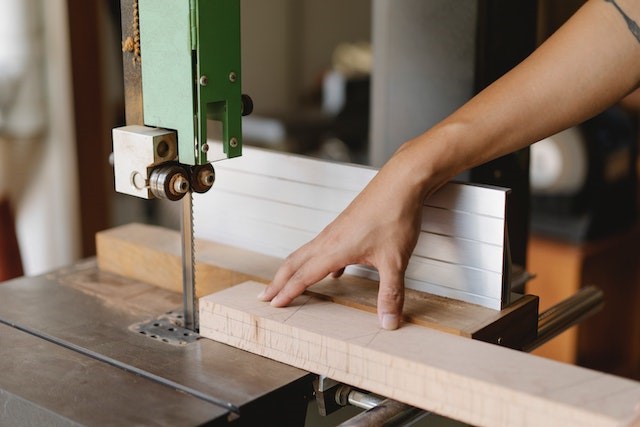
Ah, the Band Saw. This is one of the more whimsical pieces of what’s considered a saw. You know, many people don’t even realize that band saws are, in fact, saws at all. The band saw is distinguishable based upon its blade type, which is really quite different than its saw brethren.
A band saw consists of a continuous band of tooth-edged metal that runs around two or more wheels. These wheels rotate the blade while drawing the material, on which you are working, into the saw. Because of the flexibility of the blade, band saws can make plunge cuts, curve cuts, or cut intricate patterns when working with wood or other materials.
Band saws are primarily used for woodworking, although sheet metal and other thin materials can be cut as well. If you need to make curved cuts or if you need to cut intricate shapes from wood, then a band saw is your go-to.
One of the primary advantages to using a band saw is the fact that you can easily create curved cuts, as the blade easily flexes and bends. Alternatively, if you are trying to make quick straight cuts, a band saw can accomplish this as well – with a bit more accuracy than a handheld circular saw.
One of the biggest downsides to using a band saw is the fact that they’re typically large, bulky pieces of equipment, so you may need a dedicated work space in order to work with one. Additionally, you’ll need to make sure that the machine is properly aligned and tensioned in order to ensure optimal safety while you’re working with it.
At the end of the day, the band saw is an incredibly versatile and powerful tool that’s typically used in woodworking. Sure, it may take some adjusting and calibration to get it to work right, but once it’s all good to go, you’ll find that making even the most complex curves and patterns is a cinch.
Circular Saws
Ah, the circular saw, an essential tool for any woodworking job. If you’re working with wood in your workshop, then you need a reliable circular saw. Not only are these incredibly useful, they’re incredibly versatile, allowing you to make a variety of cuts.
Circular saws are a type of saw that can be powered by electricity or gas. They have a round blade attached to an arbor and are used for cutting wood and other materials like plastics, metal and masonry. Basically, they cut with a circular blade that spins around in a circle.
What makes circular saws stand apart from other saws is how versatile they are. With the right blades, they can be used to cut almost any material. They’re great for general-purpose sawing and are designed to cut through a wide range of materials, like plywood, chipboard, and even aluminum siding!
The most common type of circular saw is powered by an electric motor. Electric circular saws usually range in size from compact models to large, powerful models. While the smaller models are great for cutting wood from thin to medium thickness, the larger and more powerful models are best for cutting through thick materials like masonry when combined with a specialized blade.
Circular saws come with a variety of features to make them more efficient. Some circular saws have laser beams that cut along the same line over and over again for accuracy. Others come with features like adjustable blade depth, blade guards and vibration dampening for more comfortable handling.
No matter whether you have been woodworking for a while or are just starting out, a circular saw is a must-have tool. It’s an incredibly versatile tool and is an essential part of any home or professional workshop!
Chain Saws
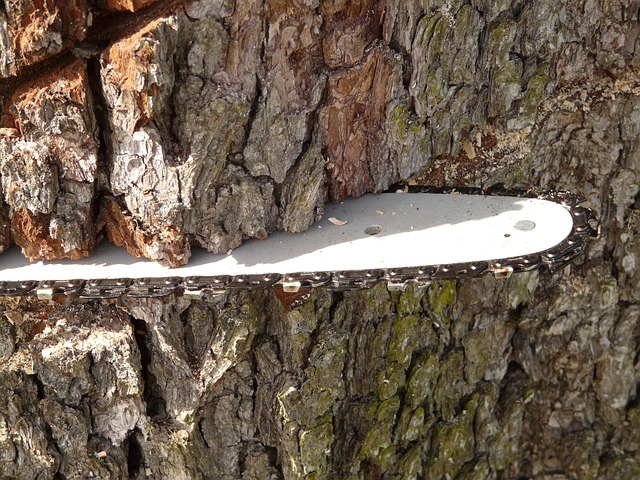
Alright, now it’s time to talk about Chain Saws! Most people think of these little monsters as the ultimate tool for cutting down trees and making serious sawdust, but there’s more to them than just being a lumberjack’s most valuable asset. Chain Saws are a top choice for many skilled DIY-ers and amateurs alike for tackling a variety of projects.
Chain saws are powered by either electric or gasoline. They feature a gasoline motor on the body of the saw and a long saw blade attached to it with a guide bar. The blade rotates around the guide bar by a drive sprocket that is powered by the motor. The size of the motor and blade determine the power and cutting ability of the chain saw. Generally, the bigger the saw, the more powerful it is and the larger materials it can work with.
Chain saws boast incredible cutting speeds and are specifically designed to make quick work of larger cutting jobs. This is why they’re so popular for general construction tasks, woodworking and yard work. They can be used to rip through large branches and tree trunks, make beveled cuts and more.
For professionals and DIY-ers alike, the popularity of Chain Saws is skyrocketing. And why not? They offer more power and versatility than any other type of saw and are more affordable than ever. With a wide range of manufacturers and sizes, discover the many uses for Chain Saws and you’re sure to find a tool that perfectly meets your needs.
Miter Saws
First of all, let me just say that miter saws are as awesome as they come! I just want to give ’em a big shout out right now! Miter saws are mainly used for making precision crosscuts in a workpiece, generally at a variety of angles. The miter saw’s design allows users to easily adjust the angle of the cut and the depth of the blade.
The most popular type of miter saw is the compound miter saw, also known as a drop saw or a chop saw. These are the perfect saws for creating miter cuts on molding, trim, door frames and other woodworking projects. The saw is usually mounted on a stand, enabling it to pivot from left to right, allowing for angled cuts across the wood. You can adjust the blade for the perfect cut, usually up to 60 degrees on either side.
Another type of miter saw is the sliding compound miter saw. Unlike the standard miter saw, the sliding miter saw allows for longer cuts and a greater cutting capacity. It is a great tool to use when you need to make a crosscut but don’t want to make two cuts of the same length. The saw slides back and forth, giving you two cuts in one go!
If you’re looking to make a mitered cut in a larger board, a radial arm saw may be the ideal saw for you. This type of saw typically features a long, adjustable arm with a mounted blade, allowing it to make angled cuts in larger boards.
Not to be forgotten, the miter box is a great tool to have if space is limited or you’re tight on budget. A miter box is a wooden or plastic tray with walls and slots cut into it. This tool enables woodworkers to make accurate miter cuts with a hand saw, without having to adjust the saw’s angle each time.
So there you have it, my fellow DIYers, that’s the rundown on the different types of miter saws. As someone who loves power tools, I gotta say that miter saws are quite possibly my favorite! Now go out there and make those angled cuts with ease!
Scroll Saws
Hey folks! You’re wondering what kind of saws there are out there for all you handy types, right? Well look no further – I’m here to tell you about this amazing saw called the SCROLL SAW! Yes, folks, the scroll saw.
Let’s start with the basics. A scroll saw is a saw with a small, thin blade used to make intricate cuts in wood, plastic, and metal, to name a few. It’s most often used to cut curves in thin sheets. Now, this might not sound super impressive, but trust me, scroll sawing is an art form – and it takes a lot of skill to master!
Scroll saws run on either electric motors or air compressors, and they come in many different sizes and shapes. The blades on scroll saws vibrate up and down, rather than side to side, like most other saws. This allows for more intricate, complex cuts, with less danger of the saw blade getting stuck in the wood.
Scroll saws are most often used in woodworking, crafting, and DIY projects. Depending on the type of material you’re working with, the blade of a scroll saw can be used to create intricate shapes, detailed patterns, or even delicate designs. They make it much easier to get the creative job done!
One of the great things about scroll saws is that they have a unique range of accessories, like different blades and adaptors, to help make cutting easier. Some of these accessories even allow you to cut multiple pieces at the same time. So, even if you don’t know what saw you need to get the job done, scroll saws are definitely worth considering!
So, if you’re looking for a saw that can handle intricate cuts – quick, easy, and with minimal risk of damage to the material – then scroll saws are the way to go. Browse around, find the right one for you, and go make something amazing!
Reciprocating Saws
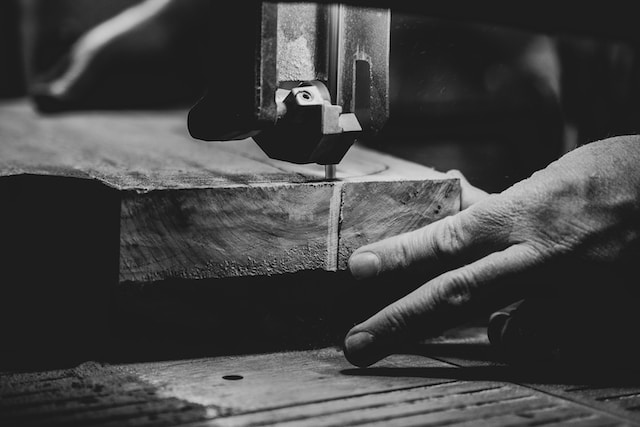
Reciprocating saws is a great tool that provide a lot of versatility. It can be used for a variety of cutting applications, ranging from straight cuts on 2x4s to demolition work on an old car. If you’re looking for a tool that can do it all, look no further than a reciprocating saw.
The name reciprocating saw is fitting, as it refers to the back and forth or push-pull motion of the cutting blade. It’s mostly used for demolition work and various construction tasks, like cutting through pipes or large pieces of wood. On top of that, it also works great for pruning and trimming trees, removing nails, and cutting metal.
This saw is also distinct from other saws because it uses a large, thin blade that is usually powered by an electric motor. This motor moves the blade back and forth at a high speed, making it much easier to cut through material. The blades used for a reciprocating saw are interchangeable, so you can switch them out depending on the type of material you’re cutting. For example, if you’re cutting through metal pipes, you’ll need a special blade that is meant for metals.
One of the biggest advantages of a reciprocating saw is that it can get into tight spaces that other saws cannot. With its narrow blade and its ability to make straight or curved cuts, you can maneuver it easily to get into hard-to-reach spots and make those tricky cuts. You can also use it to make plunge cuts or tight turns in a piece of material, something that other saws have a hard time doing.
I’ve used a reciprocating saw many times throughout my life and it never let me down. Whether I’m cutting a piece of wood or tearing down an old shed, this saw definitely comes in handy. If you’re looking for a do-it-all kind of saw for your home projects, I highly recommend you give the reciprocating saw a try.
Table Saws
Hey y’all! If you find yourself needing to make some precise cuts with maximum accuracy, look no further than that tool of choice for woodworkers everywhere – the table saw!
Now depending on how serious you are about woodworking, you can find a huge selection of table saws for jobs of all sizes. For the more serious woodworking aficionado, you can find large, heavy-duty contractor- or cabinet-style table saws with motors up to 5HP, huge cast iron tables, adjustable rip fences, and you can even add stacking dado blades to them to cut dadoes. On the other hand, if you’re a hobbyist and only engage in occasional cutting then a smaller portable or even bench-top model table saw may just suit your needs.
No matter which type you go with, the table saw stays true to its purpose – it provides a safe and secure way to make precise, accurate cuts.
Now the way a table saw works is you keep the piece to be cut on the table. Then you move a power-driven saw blade that is mounted on a sliding arbor assembly across the piece of wood. This allows you to make long, accurate straight cuts, cross-cuts and angles cuts, depending on how you adjust the saw’s miter gauge and rip fence.
Now table saws are great for much more than just making straight cuts. With the right blades and attachments you can use a table saw to make certain types of artistic or decorative cuts, or even to make bevel cuts. You can also purchase dado blades and stacked dado blades that allow you to cut dadoes and rabbets, as well as tenons for joinery.
And don’t forget about the safety features! Table saws come with the essential safety features such as a splitter, anti-kickback pawls, blade guards, riving knives and more. All of these features will help keep you safe as you’re making precise cuts.
So what are you waiting for? Get yourself a table saw and get to cutting! You won’t regret it.
Jigsaws
What do you get when you cross a power saw with a drawing tool? You get a jigsaw! Jigsaws are the undoubtedly the most fun saws. With a tiny motor that whines and vibrates to get through tight curves and shapes, it’s like drawing a picture with a saw. What’s more, you can even get ones that have letters and shapes you can pop and trace! Moreover, if you have something small and notoriously difficult to saw, nothing beats a Jigsaw.
Away from pure decoration, jigsaws are perfect for intricate cutouts in thinner materials like plywood and laminates. For instance, if you need to fit a replacement piece of paneling in an awkward spot, a jigsaw lets you do the job faster and tidier than any other saw. A thing to remember, however, is that jigsaws have relatively light blades.
Most jigsaws come with two types of blades, a metal-cutting blade and a general-purpose blade. Metal-cutting blades are usually really thick and have a large number of teeth that run alternately forward and backward. These blades cut metal faster and more effectively than the standard general-purpose blades – but they don’t give you an accurate, smooth finish. The general-purpose blades are thinner and have fewer teeth; they work best with wood and plastics.
Apart from buying the right blades, there’s one other trick to using a jigsaw: always lift the blade when you make a turn! This reduces the amount of ‘pilot’ holes you have to make to get your curves smooth. If you don’t, you’ll leave a pattern of dots on your workpiece that won’t look great when you’re done.
Jigsaws can be great fun and give you fantastic results in almost any material. Whether you’re drawing a pattern for a custom door or just following a freehand sketch, a jigsaw will give you the power and finesse you need. Grab yourself a jigsaw and start whizzing around curves and cutting shapes – the beautiful designs you make will surely surprise you!
Wallboard Saws

Wallboard saws, also known as drywall saws or keyhole saws, are important tools for any workman, because they help them make clean and accurate cuts inthin materials. Wallboard saws can be used for cutting not only wallboard but also some other materials like wood, even plastic and metal.
We appreciate tools that make our lives easier, and wallboard saws certainly do that with its ability to quickly and accurately I slice through even the toughest materials. That’s why we think these saws are the best choice for a wide variety of projects.
There are two main types of wallboard saws on the market: those with a straight blade and those with a curved blade. The straight-blade wallboard saw is the most common type, and it can be used to make both straight and curved cuts in wallboard. The curved-blade wallboard saw is more specialized and is best used for making curved cuts.
No matter what type of wallboard saw you choose, they usually have a sharp point at the tip of the blade and small teeth that help the saw grip the material firmly. This helps make sure that the cut is smooth and precise.
Using wallboard saws is not always a walk in the park because there are a few things to keep in mind. First, always when making curved cuts, make sure that you angle the saw as gently as possible to get the best results. Also, make sure that you wear protective eyewear just in case a piece of wallboard chips off or flies out of the blade, as safety should always come first.
Overall, wallboard saws are an important tool to have around if you’re working on any wallboard projects. They are lightweight and easy to handle, and they make perfect cuts every time they’re used. Make sure to get the right type of wallboard saw and always take safety measures when in use, and you’ll be sure to get great results!
Hacksaws
Hacksaws. No, these guys aren’t out to cause mischief and mayhem, I’m talking about the one tool used to saw through metal and plastic. Hacksaws look like a thin, metal frame, in which a thin metal blade is strung in a U-shape. They’ve been around since the early 19th century and today they come in a full range of sizes, shapes and blade thickness.
But what do you use a hacksaw for? You can use a hacksaw to create custom metal designs or to cut metal or plastic into shapes or sizes you require. You can also use a hacksaw to prepare a work area that you’ll eventually use a circular saw or jigsaw on. Another popular hacksaw use is to cut through stubborn screws or bolts that don’t want to budge.
When it comes to purchasing a hacksaw, the main thing you’ll want to pay attention to is the size and tension of the blade. This will have an impact on the type of cuts you’re able to make and the amount of time it’ll take you to make them. Make sure to check the blade for any signs of wear and tear and replace it if necessary.
Also – don’t forget about safety. Gloves, ear protection and eye protection should be worn when wielding this mighty saw. In addition, be sure to line the blade with a strip of masking tape or other adhesive – this will help keep the blade from kinking and make the sawing process smoother.
That’s about it for hacksaw advice. All in all, a hacksaw is just one of the many saws out there, all with their own unique set of uses. With a little bit of research and a good pair of gloves, a hacksaw can be a powerful ally in your cutting and shaping adventures.
Coping Saws
A coping saw is one of the most underrated saws out there. Found in the toolbox of many a DIY home improvement enthusiast and skilled craftsman alike, the coping saw has its own unique uses.
Let’s start by taking a look at its design. A coping saw consists of a thin, pointed blade that’s held between two metal posts. The blade extends from one post to the other and can bend around curves to make intricate cuts. The blade is held in place by a small handle, allowing the user to maneuver it as needed.
The blade moves using a tension-based system, allowing the user to make very precise cuts. As such, the coping saw is a great saw to have when making detailed designs and patterns. When used correctly, the coping saw can make intricate patterns and beautiful designs with precision and accuracy.
Now let’s take a look at its uses. Professionals in the carpentry trade rely on the coping saw to cut out intricate shapes and curves in wood. A coping saw can be used for curved doors and ornamental trim work, as well as cutting out intricate shapes in woodworking puzzles or creating intarsia wood inlays. It’s also great for making tiny dovetails and cutting decorative mouldings.
But its uses don’t stop there. The coping saw is so versatile that you could even use it to create a 3D model of a chair or a cube out of wood or a plastic material. You could even use it to produce museum-style sculptures or shapes used in masonry work.
Though the coping saw may seem like an old-fashioned tool, it can still be used on many projects today. Using the coping saw give you the flexibility to make detailed cuts and the precision to make sharp turns. So if you don’t already have one, you may want to give it a try!
Jab Saws
Ah, the much beloved and yet simple Jab Saws. Also known as a keyhole saw, their simplicity, small size and cutting power have made them invaluable to all types of DIY projects. It’s no surprise that they look like a normal saw, but they’re actually made up of a few different parts, including a thin and long blade, with a handle at the end. The blade, usually made of steel, has a long, thin profile, with closely spaced teeth. And with those teeth, you can make precise cuts in a variety of materials, even the smallest and most intricate of pieces.
Generally speaking, the Jab Saw is most commonly used to cut holes in materials like plywood, drywall, and other softwoods and thin roofing materials. Plus, with its unique design, it’s able to create curved and rounded cuts with ease, as well as cutting circles, stars, and other intricate shapes and patterns.
What sets the Jab Saw apart from many of its counterparts, though, is its ability to reach into tight corners, spots and spaces that other saws simply can’t. This makes them indispensable tools for those in the plumbing industry, as it lets you cut precise holes in walls, floors and ceilings for pipes, drains and more.
Speaking of versatility, Jab Saws can even be used for more mundane tasks. Gardening and landscaping both benefit from this tool’s ability to cleanly and accurately trim branches, twigs and smaller pieces of vegetation that are otherwise too hard to work with. This makes it as useful to the average homeowner as it is to professional craftsman.
So, if you need a saw that is versatile, easy to use, precise and portable, without sacrificing on power, the Jab Saw is your go-to tool.
